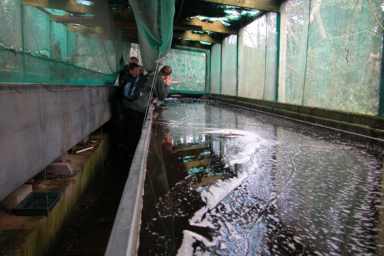

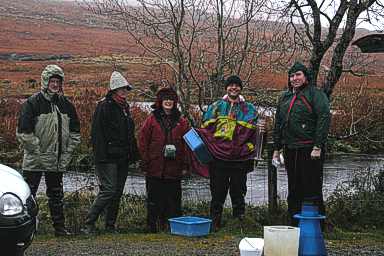
(f.l.t.r.: Rainer Dettmer, Christine Schmidt, Evelyn Moorkens, Robert Vandré, Ian Killeen)
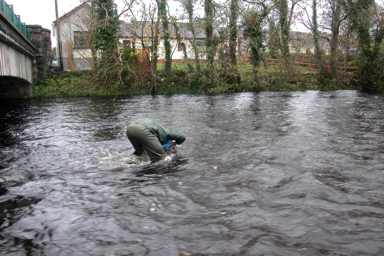
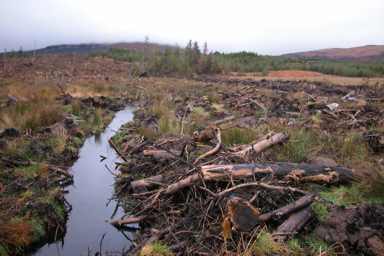
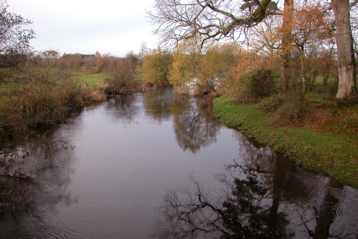
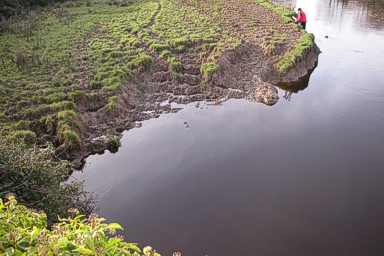
In November 2004 a meeting of conservationists from all parts of Britain
took place in Belfast. To this meeting guests from the Republic of Ireland
and Germany had been invited. On the second day of the meeting the fish
hatchery at Ballinderry (Northern Ireland) has been visited. In a vivarium
of the Ballinderry hatchery juvenile freshwater pearl mussels have been
reared for five years now. After the meeting Evelyn Moorkens and Ian Killeen
(Dublin) led a private excursion to the west coast to visit Irish mussel
brooks.
 |
Five years ago a channel of the "vivarium" has been filled with sediment. The channel is supplied with water from a brook near by. During the time when the glochidia leave the gills of their hosts infected trout are released into the channel. Subsequently juvenile mussels grow up in the undisturbed sediment. |
| Five year old juveniles in the vivarium |  |
 |
At the west coast: When mussels call - even the Irish rain cannot stop
anybody.
(f.l.t.r.: Rainer Dettmer, Christine Schmidt, Evelyn Moorkens, Robert Vandré, Ian Killeen) |
| Even within a town there a thousands of freshwater pearl mussels. |  |
 |
Yet there are problems as well: With subsidies from the Irish government moors have been planted with spruce on a large scale. To enable these trees to survive on moor land large amounts of phosphates have been supplied - an artificial fertilization that has led to algae blooms in these habitats that are poor in nutrients under natural conditions. When the spruce is being harvested again considerable amounts of phosphates that are attached to soil particles are introduced into the brooks and rivers. |
| The only population of Margaritifera durrovensis, a sister species of the freshwater pearl mussel endemic to Ireland, exists in the river Nore. |  |
 |
The number of M. durrovensis has decreased dramatically in the last few years to some hundred individuals. The reasons for this decline are still debated. Yet it is known that intensive agricultural land use has a detrimental influence on the river throughout its entire catchment (the picture shows massive erosion of a river bank where the lack of fencing allows cattle step into the Nore to drink). |
| Deutsche Version | Start | Impressum |